At f/2.0, the world of macro just got a bit faster.
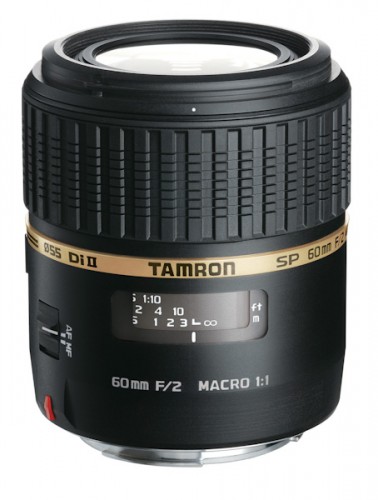
Any-and every-macro lens excites me with the challenge of portraying my subjects in intimate detail. So when I heard that Tamron introduced the SP AF60mm f/2.0 Di II LD 1:1 Macro, my heart truly started pounding. Normally, macro lenses in this focal length range start at f/2.8. So we’re talking about a macro lens that is a full stop faster.
Are you beginning to feel the adrenaline? Because this is an APS-C lens, that 60mm translates into a very respectable 96mm short telephoto on the Canon Rebel T1i that I used in my testing (soon to be available for Nikon and Sony). That short telephoto focal length gives me added breathing room between the lens and those tiny, often skittish critters I routinely confront.
Why We Need a Fast Macro Lens
Now, granted, most of us shoot our close-ups stopped-down. And it’s a given that depth of field is minimal when shooting at or near life-size. Still, depth of field does matter. We try to squeeze out every pixel of sharpness we can, especially when shooting handheld. The slightest hand tremor is enough to throw a subject out of focus.
You could add image stabilization to the lens and get around the worry over camera shake, at considerable added cost (provided it’s even available). And the benefit of this feature at or near life-size magnification is questionable. Besides, that addresses only one challenge. Outdoors, any breeze can make long arduous moments spent in fine-tuning focus on a delicate blossom a memory. Hence, you’ll often see me using a ring-flash attached to the front of the lens as a means of addressing practically any close-up challenge.
So where does a fast macro lens enter the picture? For one thing, not everyone likes to use flash or has a suitable flash in their camera bag. But there are even more important reasons. When shooting wide open (using selective focus), you surround the subject in a soft blur of color that many of us find pleasing. Or you want to throw distracting elements out of focus as much as possible and focus attention entirely on your subject-or one aspect of it. Combine that with exposing at a usable handheld shutter speed (preventing camera shake) when shooting under low light levels. And, last but not least, shooting wide open provides the added benefit of allowing shutter speeds that may be fast enough to prevent subject motion blur.
Of course, it’s all relative. You go with the flow, and tailor your approach, prioritizing depth of field and motion control-or both equally, as the situation and your artistic sensibilities demand. The fast macro lens gives you that added flexibility.
And even though this is a macro lens, we don’t have to limit ourselves to shooting close-ups. Effectively a short telephoto, it has utility as a portrait lens. As a relatively fast telephoto, it can be used for street shooting and landscapes under low lighting conditions. I spent considerable time exploring these options and found that this macro lens indeed has lots of utility.
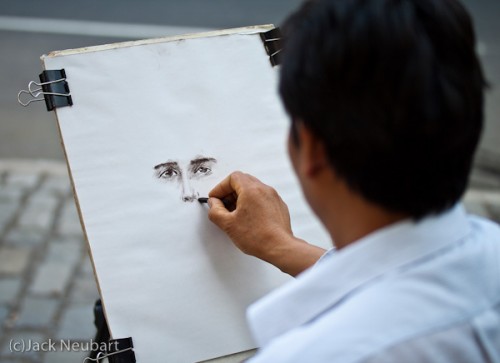
A Closer Look
As with other popular macro optics in this focal length, this lens focuses to life-size magnification (1:1 reproduction ratio) without add-on extension. The lens employs two LD (low dispersion) glass elements to correct for various aberrations. According to Tamron, they employed new BBAR (Broad-Band Anti-Reflection) multi-layer coatings for optimum performance.
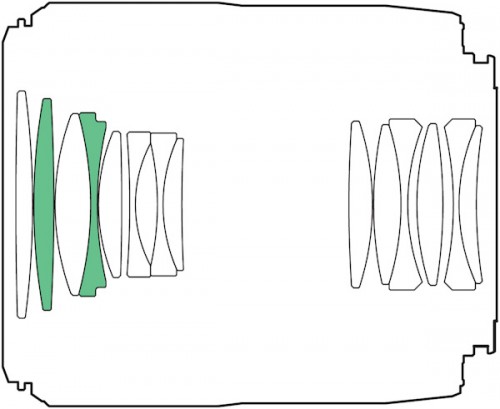
Moreover, internal coatings on cemented surfaces of lens elements are designed to enhance sharpness, while yielding superior color reproduction. It all seemed to work. The lens captured brilliant colors. It exhibited minimal vignetting at f/2. Image quality was only marginally degraded when shooting wide open, but was optimized at f/2.8 (arguably even at f/2.5).
The lens is on a par with other 60mm macro lenses in terms of size and weight, surprising, considering its fast aperture. In fact, it was well-balanced with the Rebel T1i-just heavy enough to keep a slightly downward tilt when the camera hangs from around your neck. That downward torque may also explain why it was so easy to shoot handheld under low lighting situations, or with slightly less than the optimum shutter speed, calculated by 1/(1.6 sensor factor x 60mm focal length) = 1/100, rounded off.
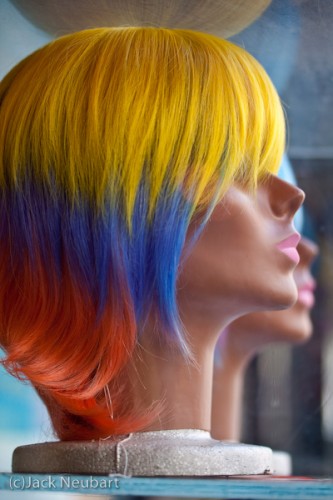

More surprising still for a lens of this speed is the relatively small filter diameter: 55mm; a drop larger than some, smaller than others. More to the point, attach a circular polarizer and you can take advantage of internal focusing. Of equal importance, since the lens does not extend beyond the edge of the barrel, that’s added assurance that you won’t frighten timid creatures. And it makes it easier to use a ring flash.
In My Experience
There are too many factors to consider (in camera and lens) to judge AF performance objectively, but on the whole I’d say it was nominal-no better or worse than with my normal macro lens. Where this macro does falter is in manual focusing.
While the lens does offer AF with MF override, as well as full-time MF, manual focusing proved jerky and uneven. While I routinely preset focus at the closest setting for life-size shooting, I switch to AF when I feel conditions are suitable at greater shooting distances-close, but not that close.
When AF doesn’t work, I switch to manual, as I did when photographing live frogs behind glass in an exhibit at the American Museum of Natural History, NYC. The problem was that I couldn’t easily and quickly arrive at the optimum focusing point because the lens fought me every step of the way. By the time I had fine-tuned focus using this lens’s manual focusing ring, the frog had moved out of position. So I kept trying, and eventually succeeded.
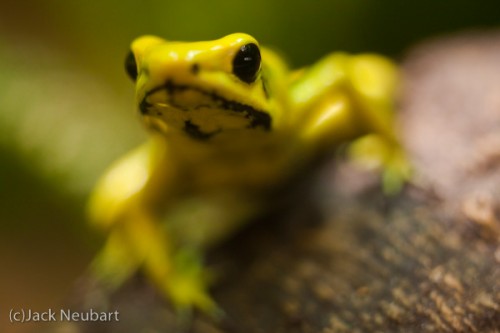
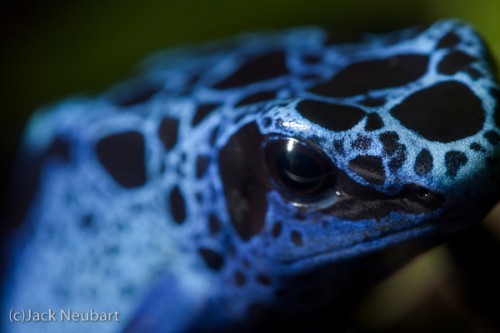
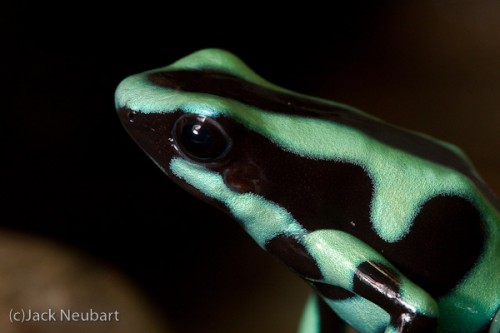
I didn’t let that experience dissuade me from trying to capture some very tight close-ups of flowers in a garden. Here I opted for ring lighting to bring as much detail into focus as possible, and in some cases using this lighting to highlight the bloom while letting light falloff create a black backdrop. In an entirely different scenario, on the streets of New York City in late afternoon, I encountered numerous situations that proved ideal candidates for this lens. They ranged from sculptures to a carriage horse and a sketch artist, as well as various scenic views.
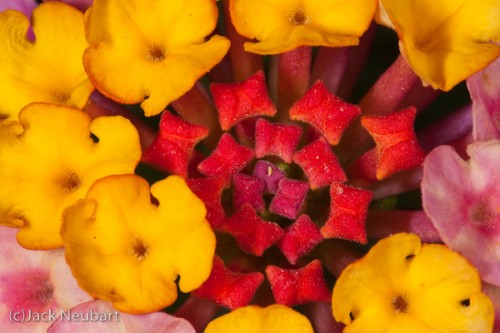
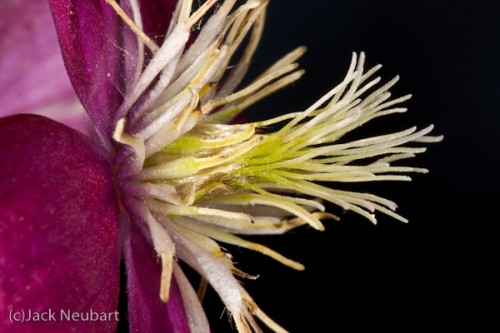
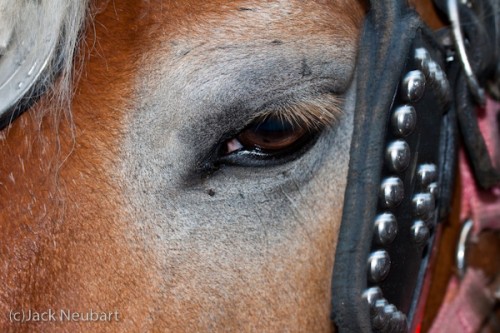
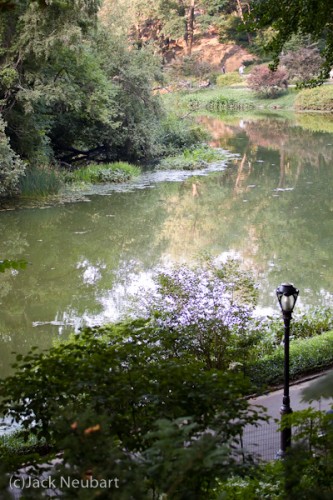
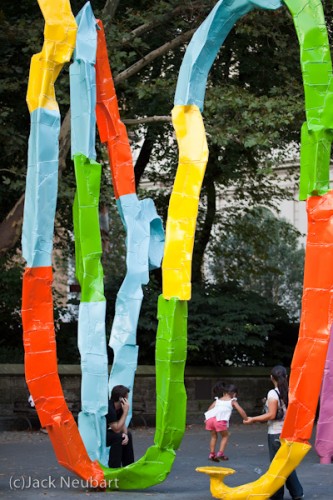
Final Analysis
Overall, I was very impressed-although the problems I encountered with manual focusing did put a crimp in my unbridled enthusiasm. In particular, I liked the way this 60mm Tamron macro softly blurred out backgrounds, while keeping the subject (plane) tack sharp. I have to add that I was really blown away by the lens’s overall optical performance.
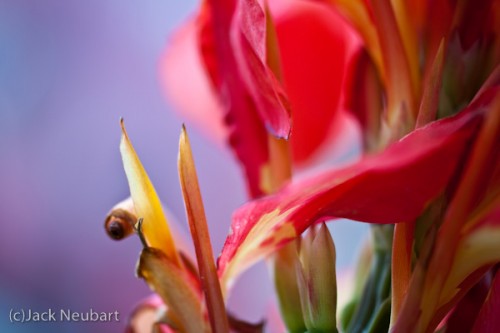


Now, the caveats. For a 60mm, non-OEM macro, this glass is not cheap. In fact, at $569 in the Canon mount, it’s pricier than a comparable EF-S 60mm Canon macro-by almost $200.
However, Nikon’s AF-S 60mm Micro-Nikkor is only a few dollars less, making this lens more competitive. And while this Tamron macro does offer a fast f/2 maximum aperture, it loses a stop at the deep end, extending to only f/22, in contrast to f/32 on those other lenses.
It’s a trade-off, but one that’s easy to accept, especially if you prefer shooting by available light. But, I keep coming back to image quality, and based on that alone, I’m sold.

For more information: Visit Tamron
Street price: B and H: $569 (Canon mount); Amazon (Canon mount): $569 Tamron AF 60mm f/2.0 SP DI II LD IF 1:1 Macro Lens for Canon Digital SLR Cameras
Technical Specifications: Tamron SP AF60mm F/2.0 Di II LD 1:1 Macro (model G005)
Lens Construction: 10 groups/14 elements
Angle of View: 26 ° 35′ (APS-C size equivalent)
Diaphragm Blade Number: 7
Minimum Focus Distance: 9.1 in. (0.23m)
Macro Reproduction Ratio (max.): 1:1
Filter Diameter: 55mm
Weight: 14.1oz. (400g) (Nikon mount)
Size (Diameter x Length): 2.9 x 3.15 in. (73 x 80mm)
Accessory Included: Lens hood
Mount: Canon, Nikon (with built-in AF motor) and Sony
Me
2 Sep 2009Olympus have 50mm f2.0 Macro for quite few years now, so there is nothing new about f2.0 is this kind of lens.
Barbu
3 Sep 2009Dunno how often have you used a lesser diafragm than f/22; at f/32 there might be some more depth (but not that much difference from f/22, especially for macro work), but the big caveeat (at least on the Canon EF-S 60mm version) is an image basically destroyed by diffraction; anything less than f/16 is barely usable, and I’d use f/22 only in emergency cases. That’s even if I can’t imagine an “emergency” for… f/22 work 🙂
Jack Neubart
7 Sep 2009Olympus may have an f/2 macro, but can you use it on a Nikon or Canon? So, sorry to say, your point is moot, despite the fact that Olympus does make excellent lenses that are well-matched to their cameras.
As for diffraction, that hasn’t stopped me from stopping down. If you can show me that the loss due to diffraction compensates for the loss due to limiting depth of field, then I’ll happily buy your argument. In the meantime, I’ll continue to try to squeeze out every drop of sharpness in depth, if not optically. In my opinion, it’s worth the tradeoff, especially since digital does provide some leeway. Again, if I’m wrong, I’ll be happy to adjust my thinking. But prove it to me first.
Otherwise, I trust you continue to read and enjoy our reviews. We’re always striving to make them better and more in tune with what the reader is looking for. However, individual approaches, techniques, vision, and style are what make a difference, so you’ll forgive me for expressing my views as I see them.
dealaddict
13 Sep 2009Just want to add a couple things to your review. I have high expectation on this lens, and I am planning to order it for macro and low light portrait shots. But I am very disappointed, and I return it right the way.
1. Build quality is just so-so, it feels very plasticky, and the plastic feels cheap also.
2. AF is a nightmare. Firstly, it is not consistent and depends on the distance to subject. At macro shots, it is great. Then at about 1m away from the subject, it becomes back focus, and when I move further away, it becomes front focus. Secondly, it is slow .. but I don’t expect it will be fast anyway. Thirdly, it cannot even find my subject in some scenario. For example, when I switch from macro to non-macro, the focus ring turns half way to maybe 0.4m, then it turns back towards the macro, and it never find my subject which is at 0.8m.
3. It seems it is soft for non-macro shot. I tried MF and make sure it is not focusing problem.
4. QC – I tried 2 lenses. The first one has alot of dust inside that it is visible with bare eye under sunlight. I didn’t really test the focus. Then the 2nd one has the AF problem described above.
For a CAD $611 lens, I expect alot more.
pizzaz
17 Sep 2009@ dealaddict: are you sure you know how to use a focus lock?
Jack Neubart
21 Sep 2009That was not my experience. Any problem that I did have, I clearly outlined in my review. All in all, I was very happy with the lens and would buy it if I didn’t already own the Nikon AF-S 60mm Micro-Nikkor, another fine optic.
Ed
25 Nov 2009HI there Jack, thanks for the informative review.
I’m a (keen) amature, about to scoop up a load of goodies in NY over Christmas to start decent underwater shooting, and considering this lens..
Since i’m now hooked on underwater I’m selling on my 40D, and getting serious with 7D (gotta have that video :DDD)..
I was hesitating between ‘normal’ EF-S 60 f/2.8 (cheap n cheerful..), or splurging for the 100mm 2.8L IS USM (mainly for the delicious IS).
However, this seems to offer great benefits for me (Internal focusing means I can all but eliminate vignetting issue associated with using a macro lens wide open behind a flat port, and f2 is an obvious bonus shooting in always-crappy light, despite ever-present flash)
Also the price point is more comfortable for me at this stage (i’ll be honest, i’m pretty shit at this… for now…) than the L-series 100mm..
Can you offer any pointers?
Thanks again, great pics, hopefully i’ll posting some great pics of nudibranch’s humping soon..
Ed
Vern
16 Dec 2009Great article. I just bought the lens a week ago and I am so impressed with its capabilities. I am new to Macro photography and finding out just how much fun it is. I am definitely feeling the adrenaline.
Thank you
Jack Neubart
16 Dec 2009Vern – glad you’re enjoying the lens. Just remember: branches can be deceptive and protrude forward, so if you’re photographing a flower or bug, watch out for nearby branches, twigs, leaves, or even bugs that might fly up against the lens (a clear filter might be advisable until you get the hang of things).
Ed – first, my apologies. Didn’t see your post till now. If underwater is what you’re aiming for, then go for the shorter lens because the water magnifies the image to begin with (I forget by how much, but that’s one reason UW photographers opt for wide lenses). For conventional macro on land, I normally do much of my macro with a ring flash, so image stabilization is not a factor. IS is of absolutely no benefit when even the slightest breeze starts tossing your subjects about (made more obvious as you move in closer and closer). The only benefit to the longer macro is that it gives you more breathing room between you and flighty subjects. But to be practical, I’m not sure how much of a difference it will make in the end. So I’d say, save your money and go for the 60mm optic. My first Canon macro was the 50, but I switched to the 100 (pre-IS) before long so that I could go lifesize w/o adapter/tube. For my Nikon, I went straight to a 60mm.
Now, I should also point out that this Tamron 60mm macro is a stop faster, so why not consider it, unless you want to stick with OEM gear?
Lynne
30 Jan 2010Hi Jack, I was just going to buy the canon 60mm macro for photographing jewelry when this Tamron lens popped up on line. Now, once again, I’m not sure which to get. I have a Canon XTI with a tamron 17 – 55 mm lens right now. Any suggestions on which lens would be better for me? Thanks, Lynne P. S. Loved your shots!
Jack Neubart
30 Jan 2010Hi Lynne – thanks for the kind words. It has been a long time since I worked with the Canon EF-S 60 macro, but as I recall it was a fine lens. The Tamron is of course newer, but more importantly it’s a stop faster. But here are a couple of other considerations:
1. Will you be buying the Canon ring flash? If so, the Canon lens is best suited to that, since the flash is designed to mount directly onto the lens.
2. What size filters do you use mostly? The Canon uses 52mm, whereas the Tamron macro uses 55mm. I prefer working without stepper rings, so if I were buying the lens, I’d make sure to get the one that already fit the filters I had so you don’t have to schlep around more glass, not to mention adding to the cost.
Aside from that, they’re both admirable choices and I really can’t advise you to get one over the other. What I would advise is for you to examine each one in the store – even if you’re buying online. Take your camera with you and hopefully they’ll let you test it out in the shop.
Good luck. You can’t go wrong. Just remember to use good camera handling techniques (stable footing, gentle shutter release, and set magnification in advance – to the closest focusing position – and just move in/back physically with the camera/lens to fine-focus). I would recommend a ring flash when you’re ready, in which case you’ll be able to stop down. But if you’re shooting wide open, then use selective focus and blur out colorful backgrounds.
I do get chatty, don’t I?
Lynne
2 Feb 2010Hi Jack, Thanks, that was good advice. Lynne
Lynne
8 Feb 2010Hi Jack, I just realized the filters I own were very inexpensive. How important is it for one to invest in quality filters? and for the macro lens, which filters should I have. Thanks from a former NYC kid. Lynne
Jack Neubart
8 Feb 2010Hi Lynne – I used to use cheap filters myself. Then I realized that they may be detracting from image quality and stopped using them (mostly they were skylight filters – 1B being multicoated). Sometimes I used a warming filter. And of course a polarizer.
These days the only filter I use is a circular polarizer. You can also use it as a neutral density (ND) filter, since you lose a couple of stops or more with it. (Of course, the benefit of ND filters is that they come in various strengths – densities – for varying effect.)
It’s really hard to say how important it is to own quality filters other than to say, if I buy a quality lens, I want to match it up with a filter of equal quality. You don’t have to go out and spend hundreds on a filter, but these brands should serve as a good guide: B+W and Heliopan, as well as the better Hoya filters. Make sure the filters are multicoated, and if you’re afraid of rain or scratches on the lens, then get the filters that resist stains and scratches. Hoya and others have them.
I’d buy filters that have the most utility, hence a circular polarizer, first and foremost.
You can buy a filter to fit your largest diameter lens and use stepper rings for the other lenses – but don’t go more than a couple of sizes. If you own a lens with a 77mm thread, and another with 72 or 67mm thread, then buy one for the 77 and steppers for the others. If your macro uses a 52, 55, or 58, I’d get one just for that because chances are you may want to switch lenses on the fly and having to unscrew lenses and screw them back on is a pain. You might want a clear or UV filter (the one that’s practically clear) just to protect the lens, especially if you plan to shoot out in the rain, inside caves, or with a macro find yourself poking around among plants and their branches, or where bugs might easily land on the lens.
Any other filter can be simulated digitally – except soft focus. But I doubt you’d have much occasion to use one – and good ones can be expensive. Soft focus filters are not the same as diffusion or fog filters – the effect is totally different. Soft focus adds a nice glow surrounding highlights, whereas diffusion filters just soften wrinkles and blemishes (for the most part). Fog filters just cloud everything over and are often more gimmicky than utilitarian.
Hope this helps.
And once a NYC kid, always a NYC kid.
Lynne
9 Feb 2010Wow, Jack, thanks. You are truly an amazing wealth of information. Lynne
Lynne
16 Feb 2010Hi Jack, I got the Tamron 60mm macro and it is awesome. I’m totally loving this lens – just shot a whole bunch of photos of my niece’s new kitten and they came out great. I’ve been shooting exclusively in manual focus and I find it perfect – totally smooth sailing – don’t know what all the fuss was about! I don’t want to take this lens off my camera, it’s too much fun. Do you suggest using the lens hood all the time outside when it’s sunny? This lenshood seems bigger than the one I have on my everyday lens. Again, thanks for your terrific review and all the wonderful advice. Lynne
Jack Neubart
16 Feb 2010Hi Lynne – glad you’re enjoying the lens. You should use the lens hood night and day, indoors and out. There are bright light sources inside as well as outside. And it’s just a little added protection from prying fingers or paws – although I do recommend keeping the lens cap on when you put the camera down – and please make sure there are no dangling straps for young’uns or kitty to tug at.
Have fun!
Lynne
18 Feb 2010great – thank you!
Richard Hannam
25 Apr 2010Jack. Just came across your site as I’ve been considering this Tamron. I use a Tamron 17-50 f/2.8 & a Canon 70-200 IS f/4L. Both awesome but I’m doing more portraits & food shots. My lenses will handle these but I thought a prime/macro would be a good addition for both use & quality. From what you say, looks as if I’m right. Probably be less distortion for internal pics too. It was a toss up between the Tamron & the Canon. You’ve convinced me the Tamron is the better option & at the same time provided some valuable technical advice. On a separate note I totally agree with you about buying quality filters. For my lenses, I use the Hoya HD CPL. Virtually indestructible, great image quality & only 1 stop of light lost. And a half decent ND stand-in as well. Not cheap but the only sensible option. Obviously I have UV filters too. if it’s a choice between a $2500 lens & a $100 filter, I know which one I’d choose! My Canon uses 67mm filters. Could I use a stepper on the new Tamron which is 55mm? I use 2 cameras so switching lenses is not a problem.
Thank you very much.
Jack Neubart
28 Apr 2010Richard – you didn’t specify which filter you had: 67 or 55mm. You can use the 67 on a 55mm thread, but don’t go the other way, as that will lead to vignetting. The other thing to consider: will the lens shade still fit?
Glad you’re enjoying Photocrati.
Carrie
24 Jun 2010Hi Jack,
Great article. I just purchased a Nikon D-90 and want to buy a macro lens tomorrow. I’m torn between the Nikon 60mm AF-s micro f2.8 ED or the Tamron AF 60mm f2.0 sp. I’m pretty new at this and I’m not sure what AF-S ED vs SP DI II LD means.
Could you lead me in the right direction?
Thanks.
Jack Neubart
27 Jun 2010Sorry for the delay, Carrie. Was out of town. I own the Nikon 60 micro, which is a fine lens. I didn’t compare them side by side, and frankly it’s been a while since I worked with the Tamron. I would say, go to the store, mount each lens on the camera, and see which feels best. If you can, make some test exposures – if you use the camera’s built-in flash to prevent camera shake and enhance depth of field, make sure to remove the lens shade. Don’t make tests at high ISO values, since the noise will interfere with your evaluation of the lens.
I hope this helps.
Phil
15 Jan 2011Great review Jack, I haven’t decided on a Macro yet but you helped to narrow down the field.
Benjamin
22 Apr 2011Jack,
I may have missed it but I thought you should know: the aperture changes with focus distance on this lens. At about 3 meters from the subject it can still be shot wide open, but as you focus on closer subjects the aperature closes more and more until it is at about f/4 at the closest focus distance.
You can confirm this in the EXIF data.
Victoria Sinani
3 Jun 2011I am looking to purchase a lens for 50:50 macro:portrait and this was one of the lenses I was interested. As well as macro my lens will be used to take portraits of my 2 year old. How fast does the Canon focus? is it suitable for low light/indoor portraits? How do the portraits compare to the canon 50mm 1.8/1.4? I am one a very ltd budget so was hoping to use this lens for 2 purposes.
How do you find the working length for macro? is it enough for insects? Is it ok to use without a tripod? Have you compared to the 100mm F2.8 macro?
My other alternative is the Canon 60mm F2.8 macro. Will I notice a difference between the F2 vs F2.8? The canon has a usm and reports say focusing is very smooth. Both new are a similar price so advice would be apprecited. I need the lens with the best bokeh for portraits and faster AF as a 2 year old does stay still for long.
Victoria Sinani
3 Jun 2011Sorry I mean’t to say how fast does the Tamron focus!
Jack Neubart
6 Jun 2011Victoria – I haven’t compared macro lenses side by side, but essentially, you would not use a 50mm lens for portraits, unless it’s on an APS-C camera (where it will then translate to a longer focal length). I own the Canon 100mm f/2.8 macro and it’s a fine lens – which would also work nicely for portraits (although you may have to soften the image using Photoshop or a similar program for a more pleasing effect in a portrait).
The whole idea behind a macro lens is to focus on small things, incl. insects. Most macro lenses focus to lifesize magnification – but that also take a lot of careful use of the camera/lens to get sharp pictures. Read my other responses for more info on close focusing.
Thanks for writing.
Jack Neubart
6 Jun 2011Victoria – as an addendum, I would not use the 50mm for portraits, no matter what. Portrait focal lengths on a full-frame camera start at around 85mm, to 135mm. Sorry, but you can’t get everything in one lens. If you’re on a tight budget, then I’d get a zoom – say a 70-200 f/4 L-series and if that’s too pricey, then something in that focal length range that may be cheaper (remember to multiply the given focal length by the sensor factor – 1.6X in the case of Canon APS-C cameras, but not if you’re using a full-frame camera).
Not to mention, if you buy a macro lens, you’ll need a ring flash sooner or later, since you’ll otherwise get very blurry or out-of-focus pictures shooting handheld, unless you’re really good – in which case, you can shoot wide open and go for selective focus, where you blur out the background into a wash of color.
Hope this helps a bit more.